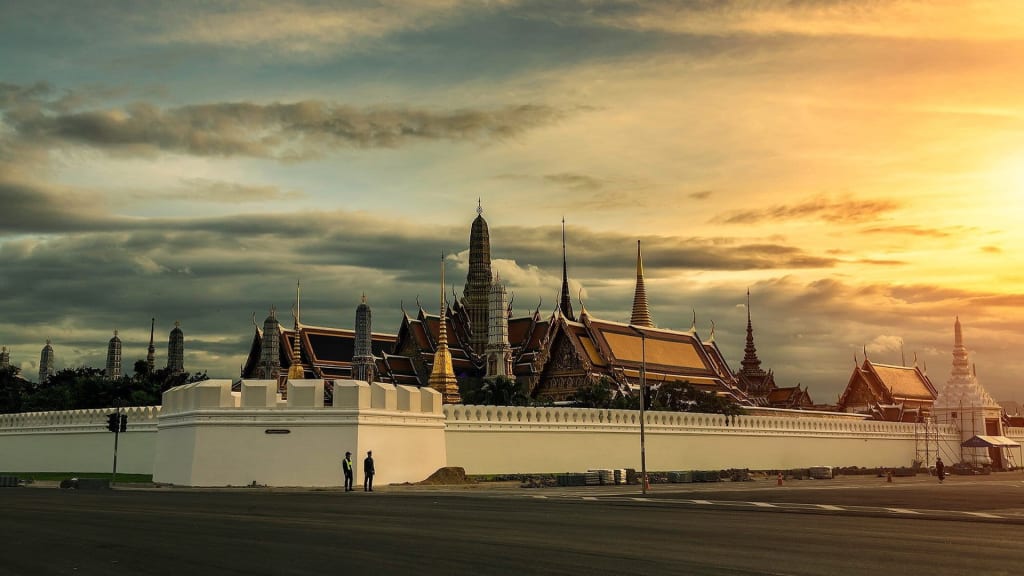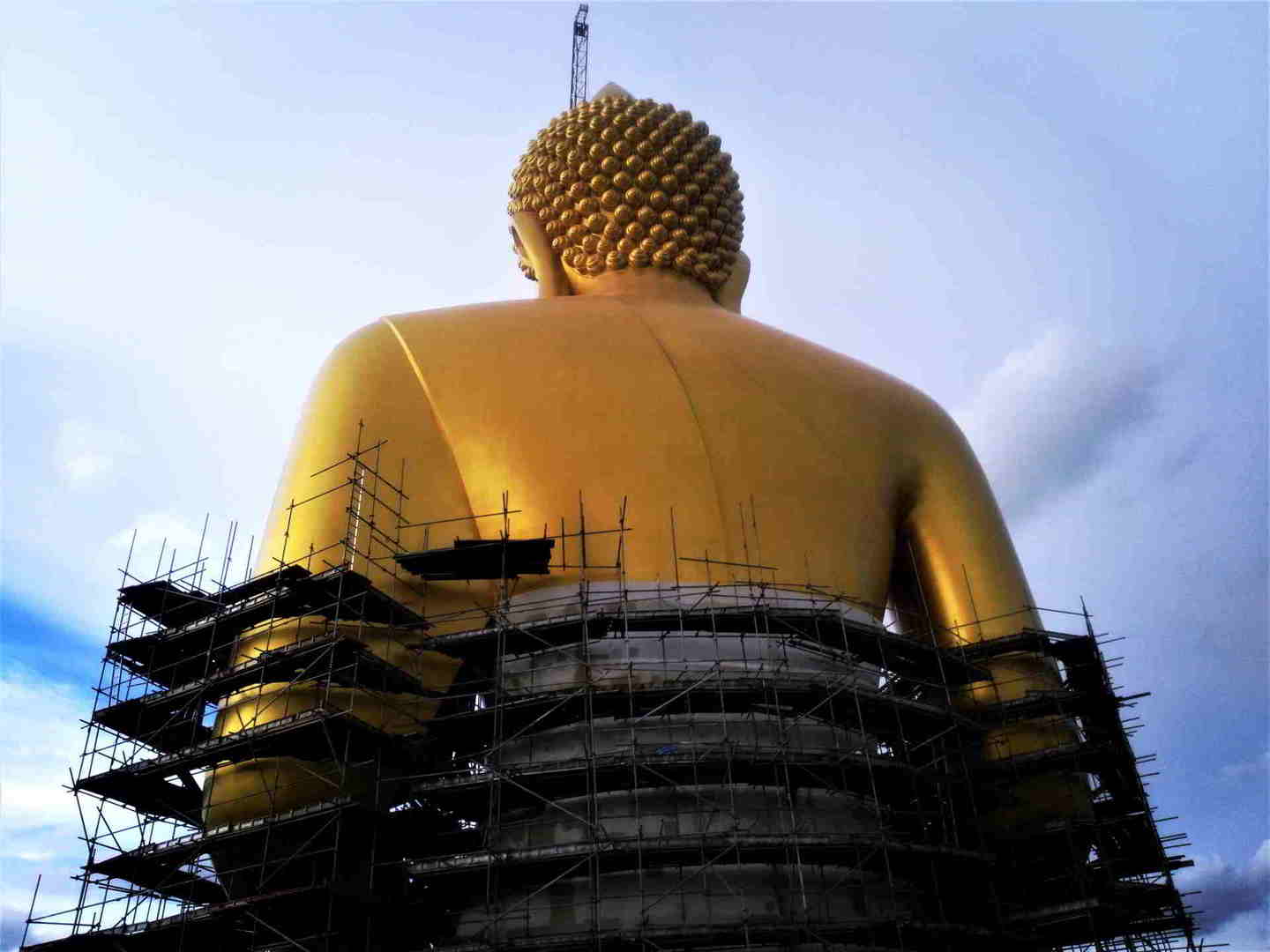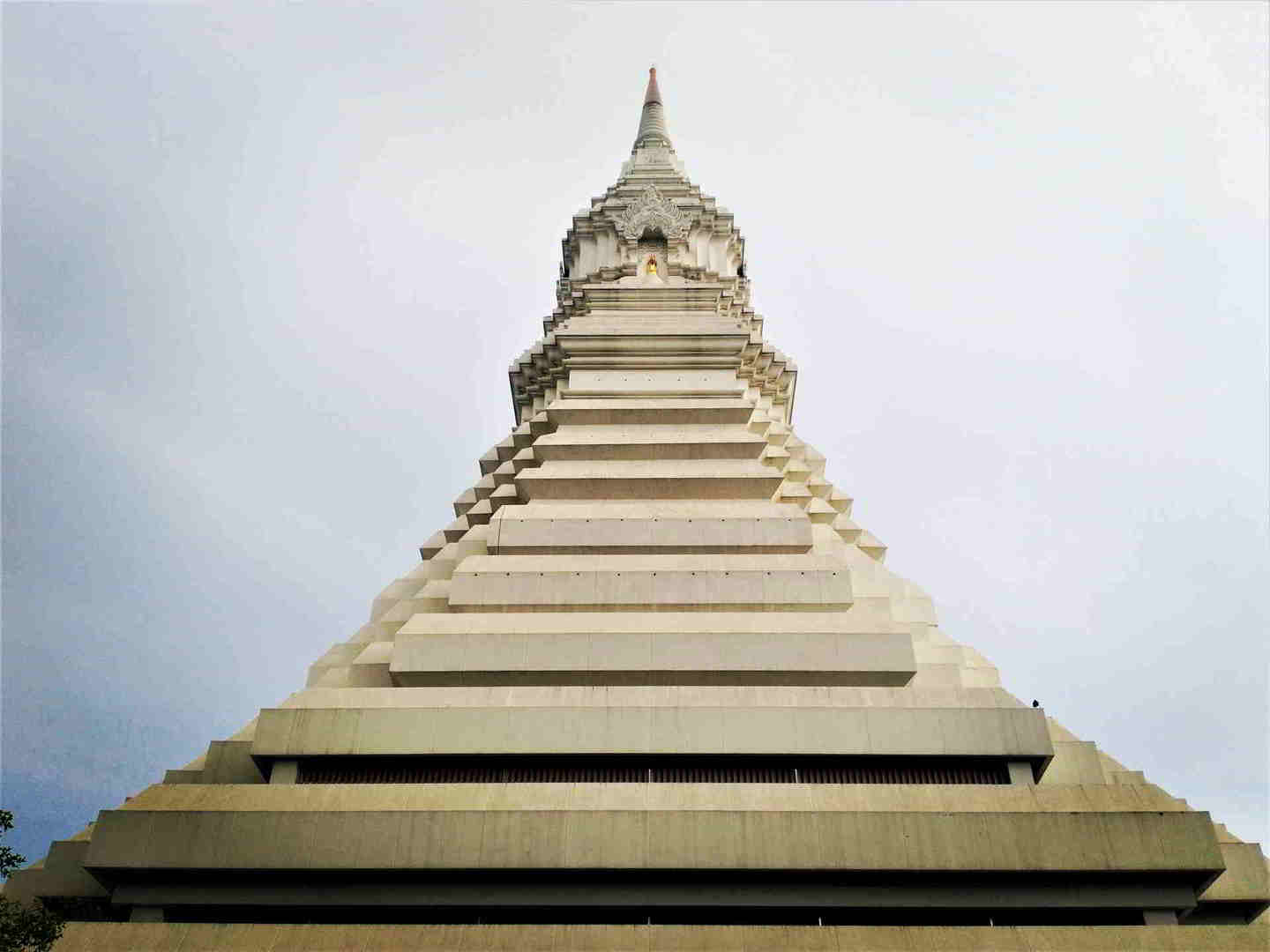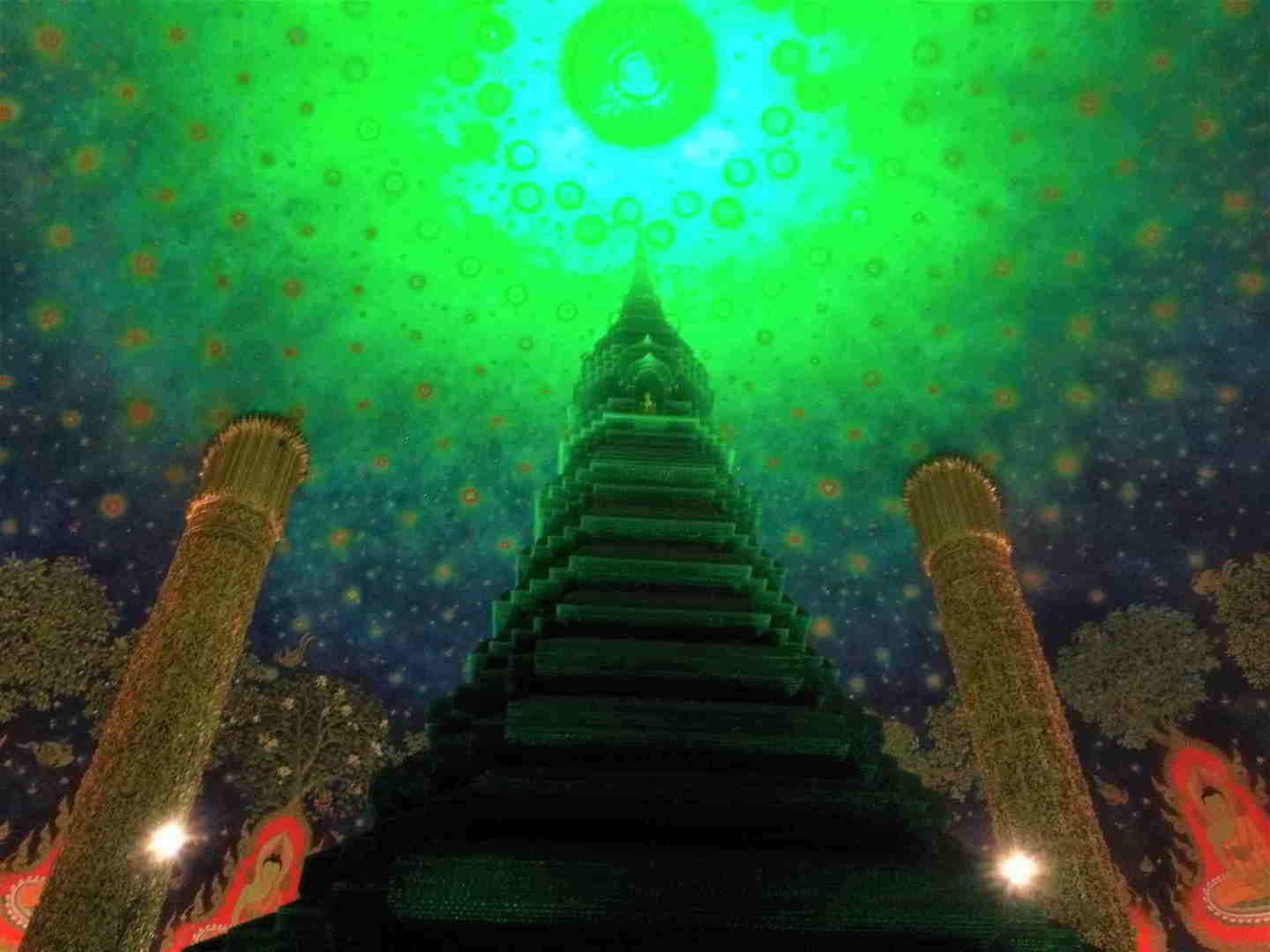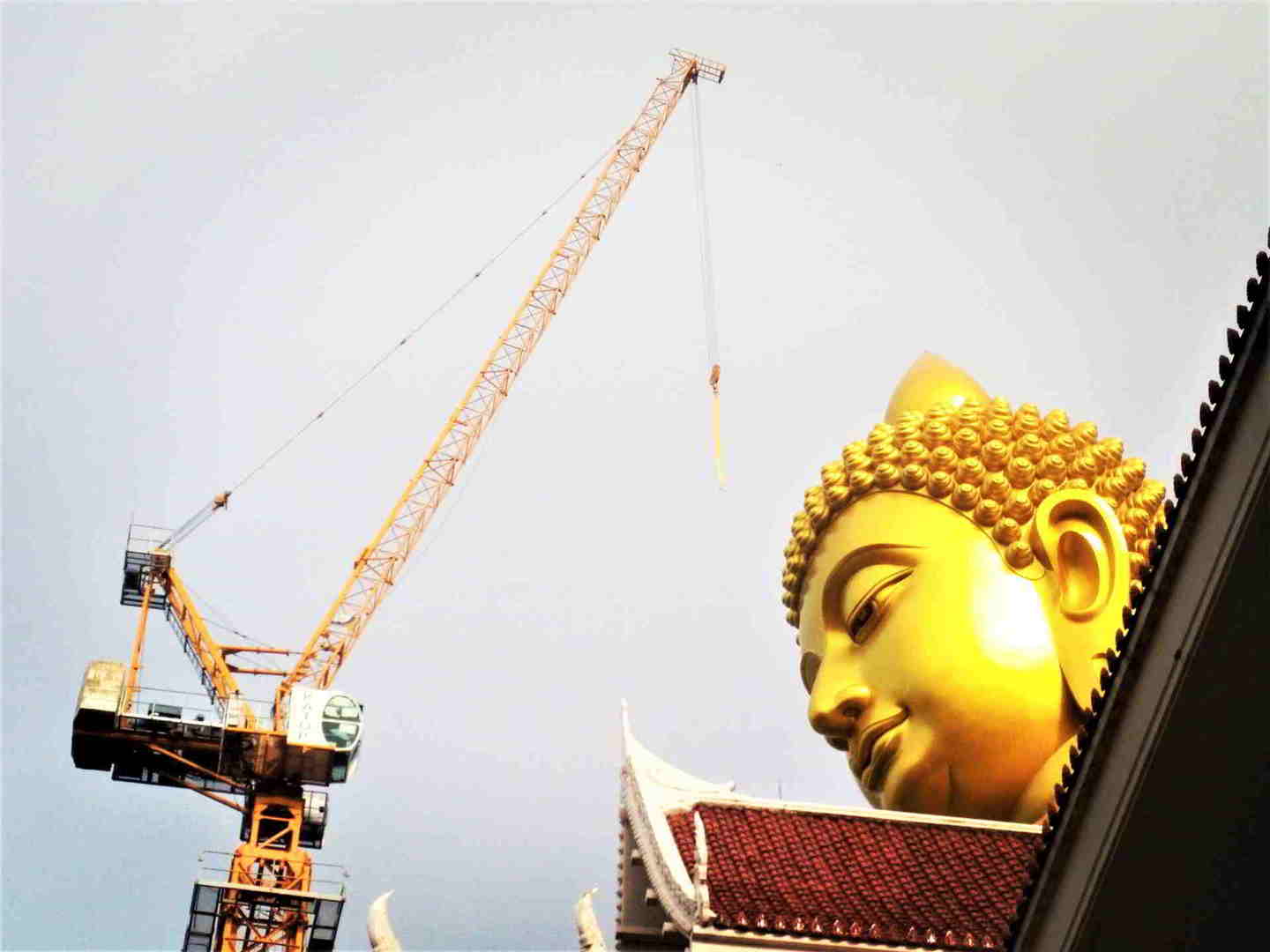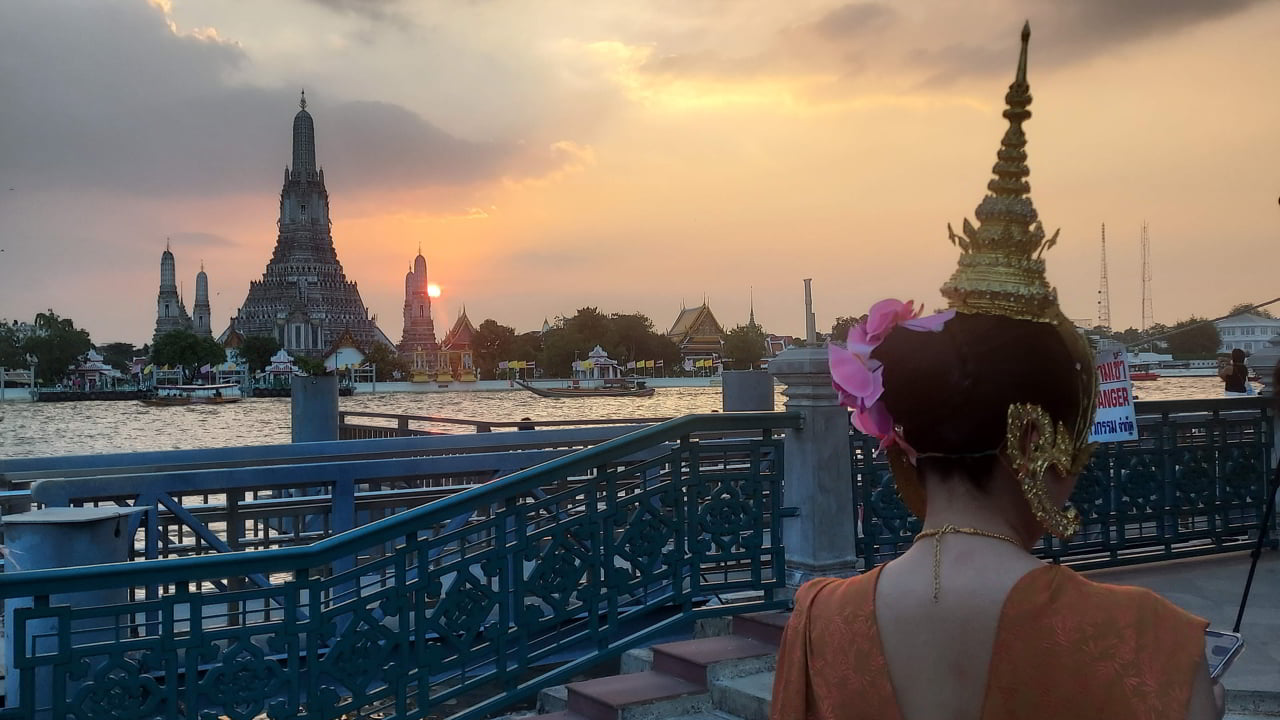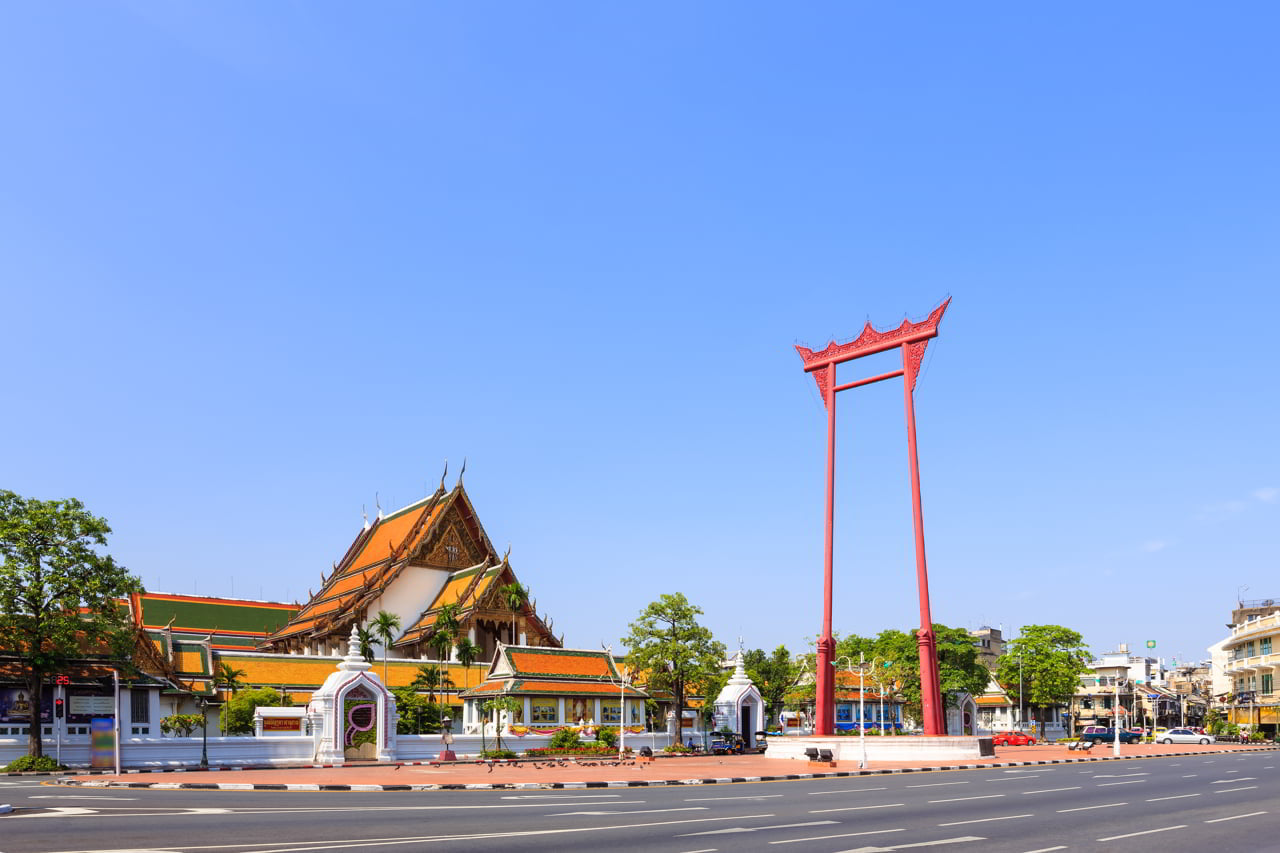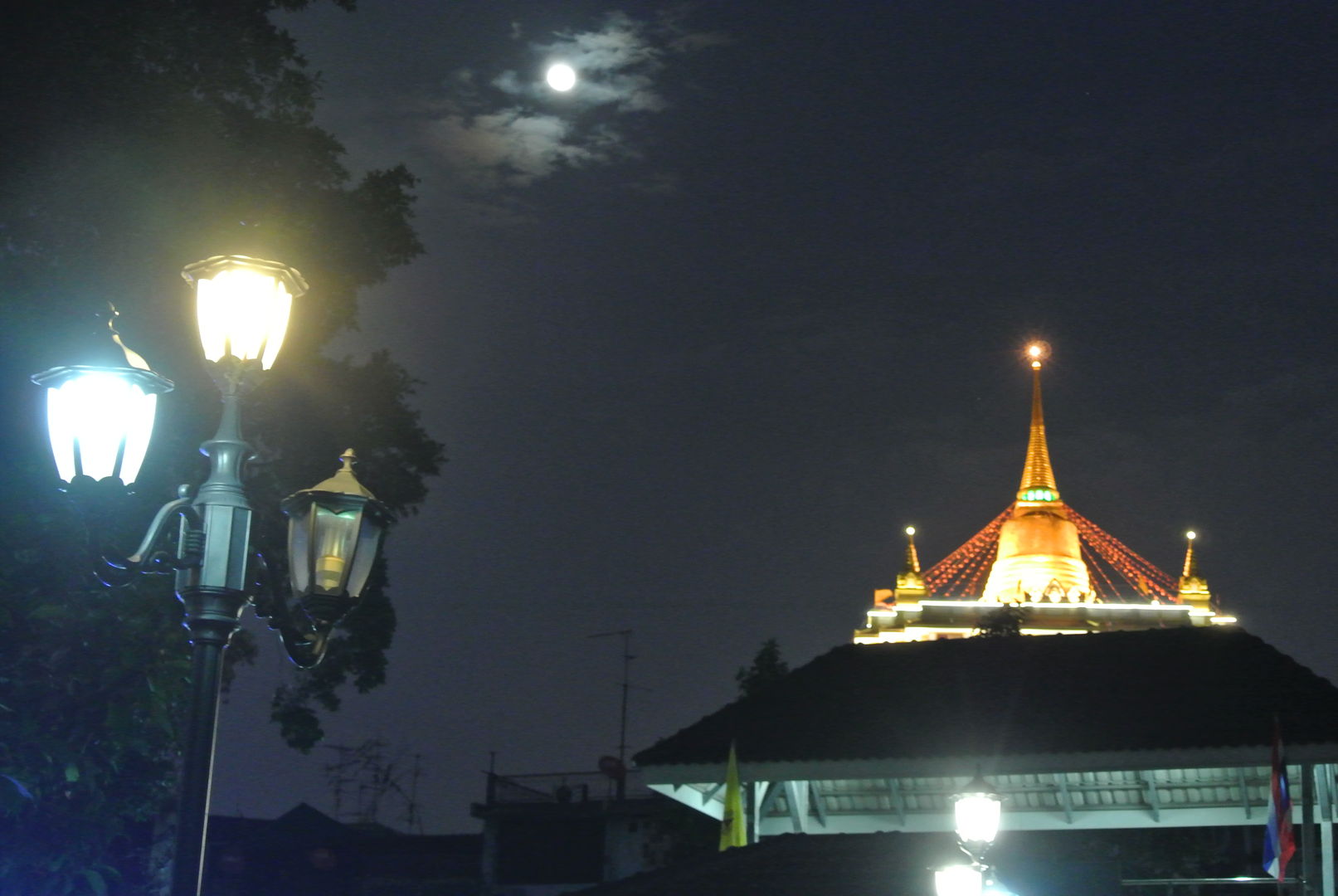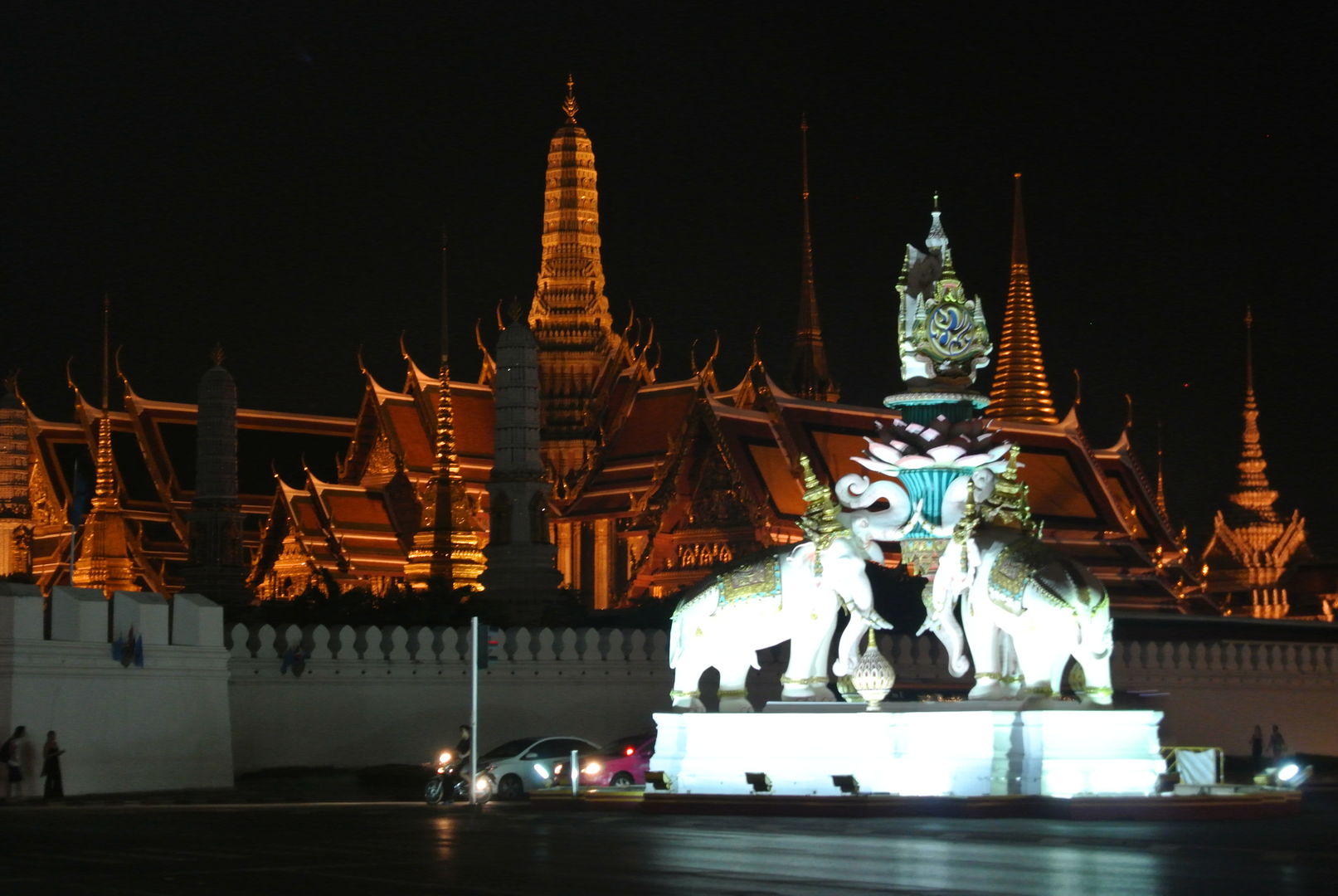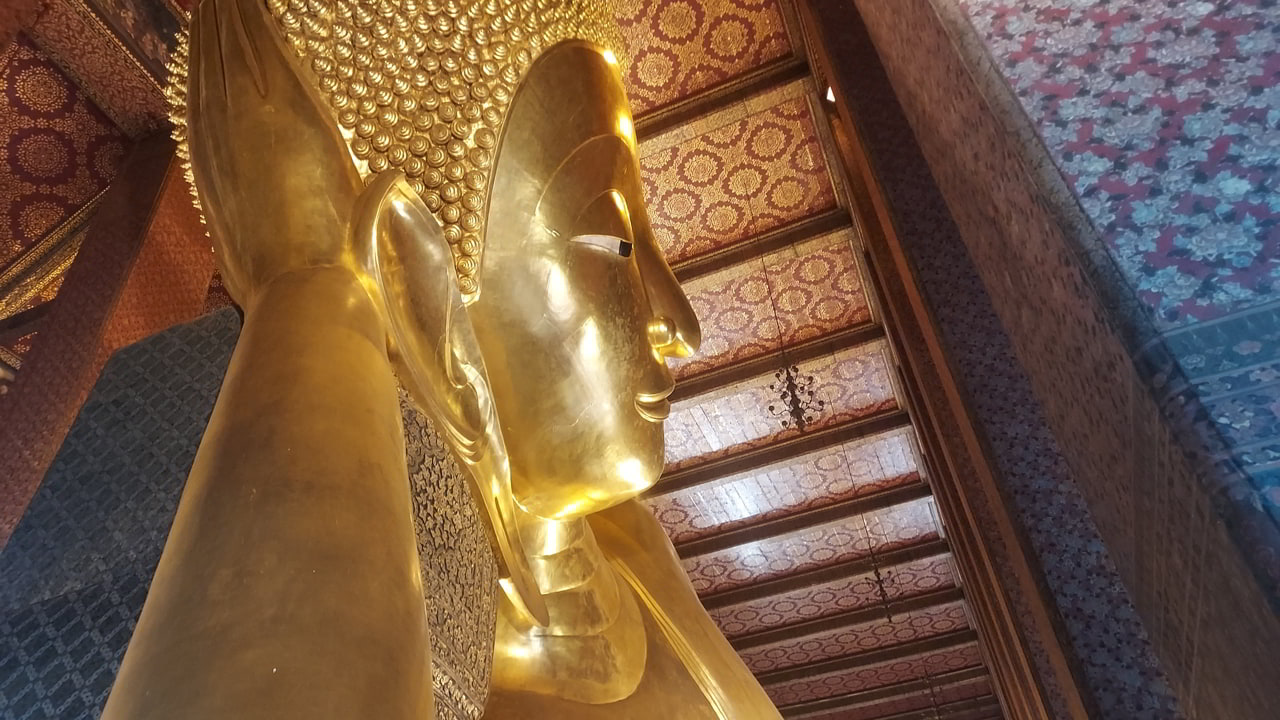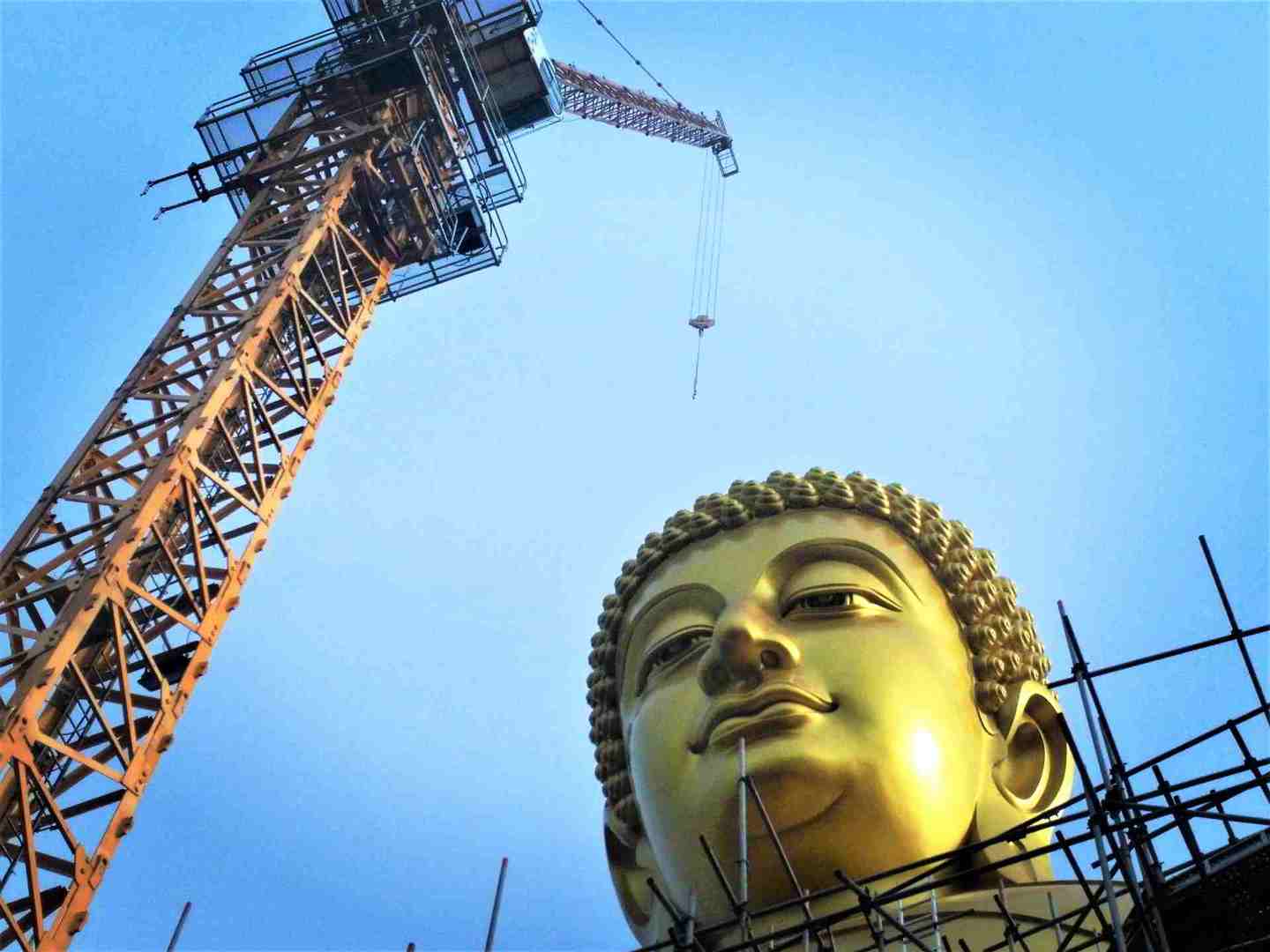
Wat Paknam in Bangkok: The Giant Buddha and the Psychedelic Stupa
Wat Paknam Bhasicharoen has become one of Bangkok’s most fascinating temples. With its 69-meter-tall Buddha and its dazzling psychedelic dome, it blends spirituality, history, and modernity in a unique way.
Where is Wat Paknam?
Wat Paknam Bhasicharoen is a royal temple located on the western bank of the Chao Phraya River, in Phasi Charoen District, near Thonburi. It sits between two canals — Khlong Dan and Khlong Phasi Charoen — and can easily be reached from Bang Phai MRT Station.
Next to it stands Wat Khun Chan, another remarkable temple worth visiting.
A temple with centuries of history
Although the temple may seem modern, its origins date back to 1610. For centuries, Wat Paknam was an important center for Buddhist teaching supported by several kings.
In the early 20th century, the temple fell into decline before being revived in 1916 by meditation master Luang Pu Sodh Candasaro. He rediscovered an ancient meditation technique known as Vijja Dhammakaya — said to have been practiced by the Buddha himself.
His teachings led to the foundation of the Dhammakaya tradition, which later spread Theravāda Buddhism to the West.
It should be noted that at the time of Luang Pu’s appointment as head of Wat Paknam, the temple already had a congregation of 500 monks, as well as a significant number of Maechi — Buddhist women who devote their lives to religious practice and observe a specific set of precepts.
Luang Pu passed away in 1959, and his body, never cremated, is still preserved inside the temple.
Wat Paknam and its influence in Thailand
After Luang Pu’s death, the temple faced several years of uncertainty before Somdet Chuang was appointed as the new abbot. Since then, Wat Paknam has remained in the national spotlight, reflecting the complex ties between religion and politics in Thailand.
Notably, a nun (Maechi) from Wat Paknam was behind the creation of the famous and controversial Wat Dhammakaya.
Another distinctive feature: Wat Paknam gives a prominent place to women, unlike most Buddhist temples in Thailand.
The Maharatchamongkhon Stupa: a colorful masterpiece
Construction of the massive stupa began in 2004 and was completed eight years later. The 80-meter-tall twelve-sided structure houses several rooms, including a shrine with relics and statues of revered monks.
The top floor features a glass stupa beneath a kaleidoscopic dome — a psychedelic blend of Buddhist cosmology and pop culture aesthetics.
The Wat is a complex of temples covering more than 32,000 m² (equivalent to 4.3 football pitches). The oldest parts are located at the heart of the complex.
The Giant Buddha of Bangkok
Work on the monumental bronze Buddha began in 2017 and finished in 2020. The statue, seated in meditation, stands 69 meters high and 40 meters wide — one of the largest in Bangkok.
Its posture symbolizes the meditation method taught by Luang Pu Sodh. The lotus bud atop the head is said to contain relics and gold. Visible from across Thonburi, it has quickly become one of the city’s most iconic landmarks.
With its shimmering stupa and enormous Buddha, Wat Paknam has become a must-see site for anyone exploring the spiritual side of Bangkok.
Practical information
- Address: 300 Ratchamongkhon Prasat Alley, Pak Khlong Phasi Charoen, Bangkok 10160
- Opening hours: Daily from 08:00 to 18:00
- How to get there: MRT Bang Phai, then a short taxi or motorbike ride (or 10-minute walk)
- Entrance: Free
What to see nearby
FAQ about Wat Paknam in Bangkok
Why is Wat Paknam famous?
It’s known for its 69-meter-tall Buddha statue and the psychedelic dome inside the main stupa.
Can visitors access the colorful meditation hall?
Yes, it’s located on the top floor of the stupa and open to the public.
Is the giant Buddha visible from the city?
Yes, the statue dominates the Thonburi skyline and can be seen from several parts of Bangkok.
What is the best time to visit Wat Paknam?
Morning or late afternoon, when the light enhances the golden tones of the Buddha and the stupa.
